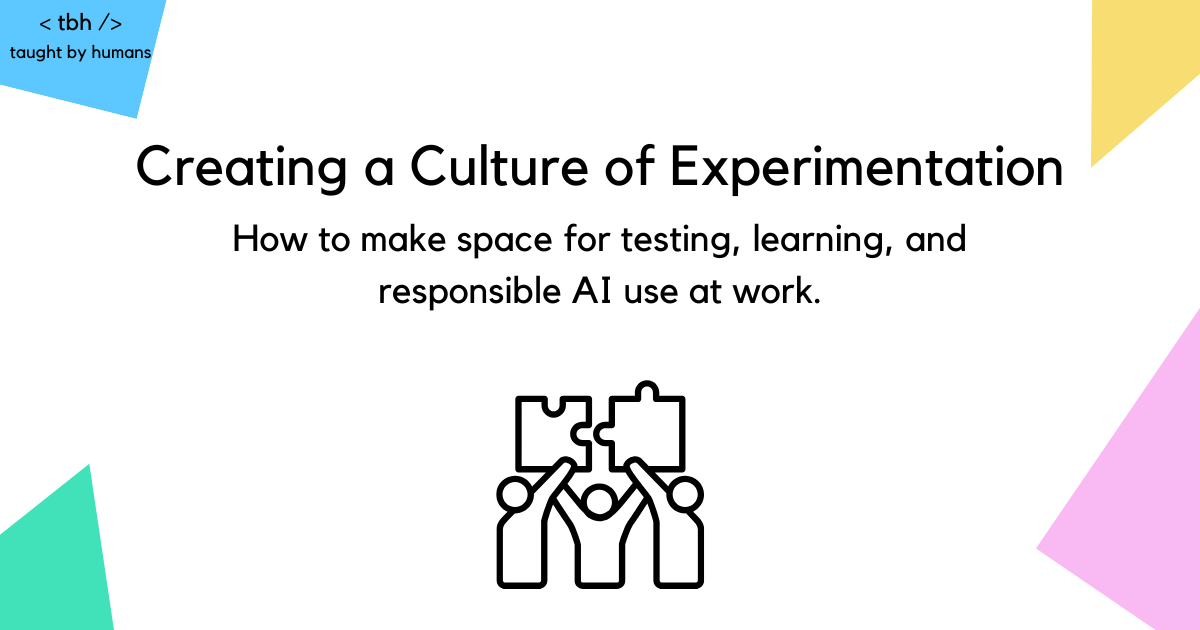Creating a Culture of Experimentation
text

How to make space for testing, learning, and responsible AI use at work.
AIAI at WorkEmployee Upskilling
Loading content...
Want More Resources Like This?
Sign up for our Thoughts by Humans newsletter to receive the latest AI and data resources directly to your inbox.
